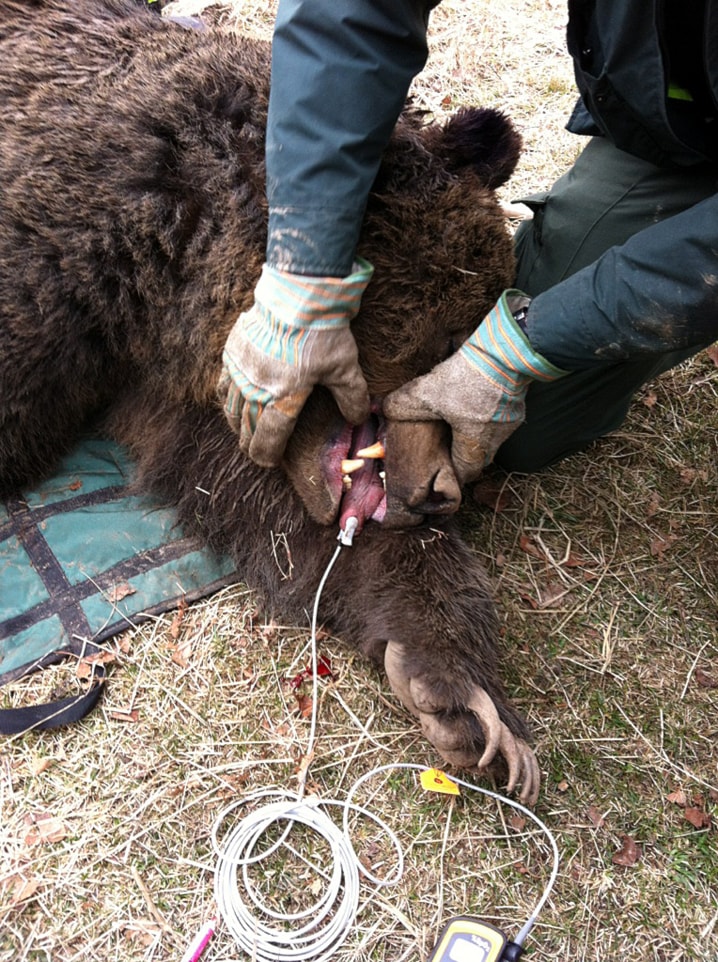Two problem grizzlies who were up to no good in Central Alberta have been captured and relocated 800 km north of Sundre.
Alberta Fish and Wildlife trapped the bears, at 317-kg (700 pounds) and 181-kg (400 pounds), after they were blamed for raiding grain bins and killing two calves southwest of Caroline, last week.
Adam Mirus, district officer of the Fish and Wildlife enforcement branch for Sundre-Olds, said the wet conditions allowed them to determine from the tracks that they were dealing with two grizzlies.
A bear response team was enacted in the area on April 15 after a dead calf was found and it was confirmed that a grizzly was responsible.
Then, over a span of nearly two weeks, the grizzlies were also blamed for ripping the door off a granary and killing another calf in the area.
Fish and Wildlife officers set traps and snares and worked with landowners to determine the location of the grizzlies.
The larger of the two male grizzlies was captured in a culvert trap on April 25.
The next morning, the smaller bear was caught in a leg snare in the same general area.
“In this case, both bears were relocated 800 km north where there is no cattle so they can get back to their natural food source,” said Mirus.
Mirus said two to six grizzly relocations occur each year in every district.
Once the bears are captured, officers take hair and tooth samples to determine their age before relocation. Mirus said every case is different and the relocation depends on the age, sex of the bear, and where the bear was caught and what it was doing.
Mirus said the larger male was believed to be between 10 and 25 years of age. They were not able to obtain a tooth from the smaller bear but they believe it is younger.
For more information on bear activity, visit www.mountainviewbearsmart.com.
crhyno@www.reddeeradvocate.com
